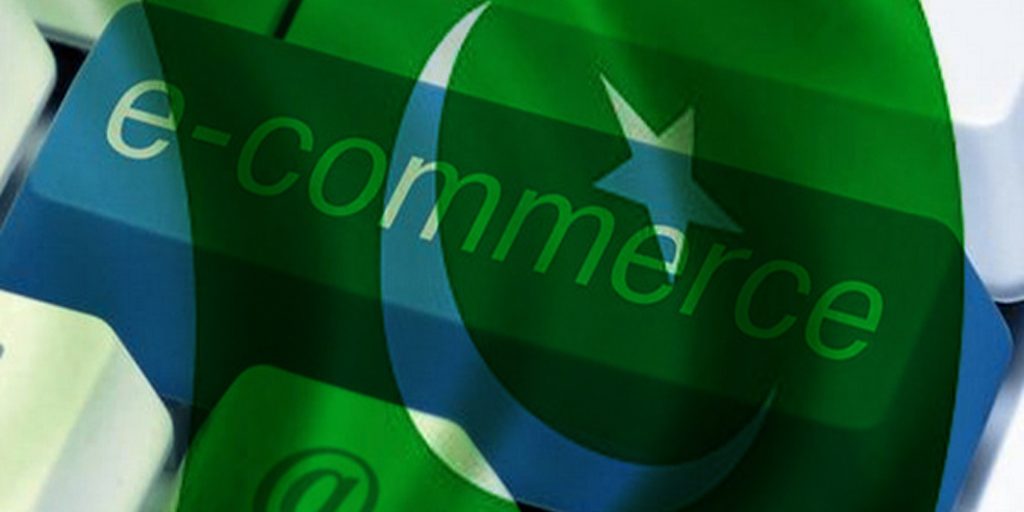Pundits predict hitting $1 billion mark by 2020
In today’s digital world where the West is positioned firmly in the e-commerce market, the Asia-Pacific region (APAC) no longer lags that far behind. In 2015, APAC constituted $877.6 billion or 10.1 percent of the total retail sales of the global e-commerce market, according to a report by emarketer.com, an independent market research firm focused on digital marketing.
Pakistan stands at the second largest in terms of e-commerce industry in South Asia with about $75 to $100 million currently, while India leads with a whopping $33 billion while Bangladesh and Sri Lanka follow at number three and four, with $44 million and $25 million worth of e-commerce market in 2015 respectively.
“It is the first time, Asia Pacific region has extended outright dominance in the world market,” the report said. “The rally is on the back of extensive growth by economies like China and India, which led the region followed by South Korea, Indonesia, and Japan.”
Pakistan subsequently forms a part of APAC and is in international limelight currently for its rapidly growing e-commerce market – with Alibaba and Rocket
Internet gazing at the potential. However, where other Asian economies are credited for APAC’s e-commerce growth, international research firms do not recognize Pakistan as a heavy contributor as such.
The brighter side:
The research also forecasts that APAC’s e-commerce market will grow by 12.6 percent and will have 52.5 percent share in the global digital retail in 2016. For Pakistan’s e-commerce, local gurus predict that it will hit the $1 billion mark by 2020 – or maybe earlier. Profit decided to find out how.
How big is the size of Pakistan’s e-commerce market currently?
Though relatively new in the business, online shopping trend is catching up faster than ever. The size of the e-commerce market of the country is debatable as documentation is difficult, but the e-commerce market is estimated to be $75 million in its current scenario, though some experts paint a far better and brighter picture.
“The local e-commerce market stands at almost $100 million,” said Badar Khushnood, Co-Founder, Brammerz – a digital media agency.
This explains that e-commerce is spreading its talons across the country.
Though many say it took us too long to embrace the digital boom as compared to similar economies within the region, local experts have hopes for a brighter future, as they predict the market to likely surpass $1 billion by 2020.
“The target is not far-fetched. With growth this steady, it can be achieved even before the given time,” says Zain Ali Sheikh, Country Manager of Kaymu.pk.
The e-commerce market is not only doing well in urban centers but has progressed swiftly in the rural hinterland too.

“Different cities in Pakistan are showing interesting e-commerce trends,” said a former spokesperson for Uber, an international ride-hailing company that landed in Pakistan a year ago. “Tier two cities of Pakistan are showing better growth instead of tier one cosmopolitans like Lahore and Karachi,” the Uber spokesperson told Profit in a past interview.
The tilt of the trend:
Approximately 35 percent of the country’s monthly 70,000 cash on delivery (COD) shipments are delivered to cities outside the three main urban centers – Karachi, Lahore, and Islamabad. Startups like StationeryX and just4girls.pk – which deal in niche segments of stationery and cosmetics, respectively – vouch for the trend as reflected in their monthly orders.
“Over 50 percent of our sales are from the rural areas,” said Sheikh, Country manager of Kaymu.pk also validated. “We currently cater to 240 cities in Pakistan, and many of them are tier two cities,” he added.
Though indicators show a positive trend, Pakistan’s e-retail market is still nowhere near the global one due to its late adoption of e-commerce and lack of trust among people at large.
“People initially assumed that since we are an online startup, we are supposedly expensive than the market,” said Naveed Azhar, Director Marketing at just4girls.pk – a startup that has recently started to uptake with the growing e-retail trend.
Accent on cash-on-delivery:
Being a cash-based economy, Pakistan’s e-commerce industry structurally differs from developed countries. “About 97 percent of our economic transactions are cash-on-delivery,” says Nauman Mirza, CEO of EatOye and foodpanda, the largest online food portal.
“Pakistan remains a largely underserved market in terms of digital access and digital payment,” according to a Global System Mobile Association report.
“In Pakistan, there are one million credit and 27 million debit cards but debit cards are not eligible for online transactions. So, these are inoperational as far as e-commerce is concerned,” Mirza said.
Experts are of the opinion that there are about 5,000 online shops with only 50 of them having integrated methods of online payment currently.
Some argue that the lack of digital system is keeping Pakistan’s e-commerce from moving ahead. While others believe the online payment hurdles might have changed the mode of the transaction but it has not slowed down the e-commerce sales.
The change of transaction mode is apparently irrelevant and ineffective on the online sales, as these are showing an uptake on their own pace.
All said and done, despite hurdles, e-commerce in this country is likely to grow as the mistrust gradually withers away – even if to a very large extent the reliance remains on cash-on-delivery.
























Afreen u dond a great job.
Mashaa Allah!
nice work
[…] people are moving to the online system of doing business and trade. Pakistan is the second largest e-commerce market in South […]
Comments are closed.